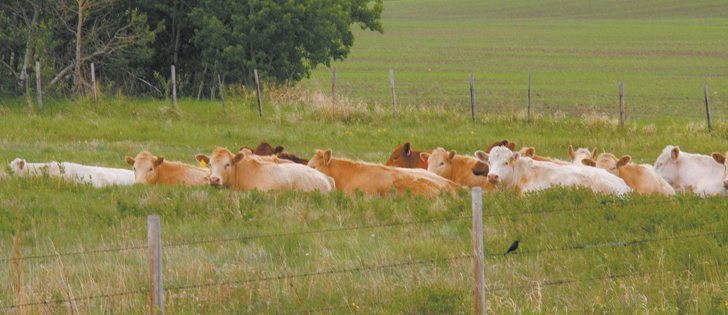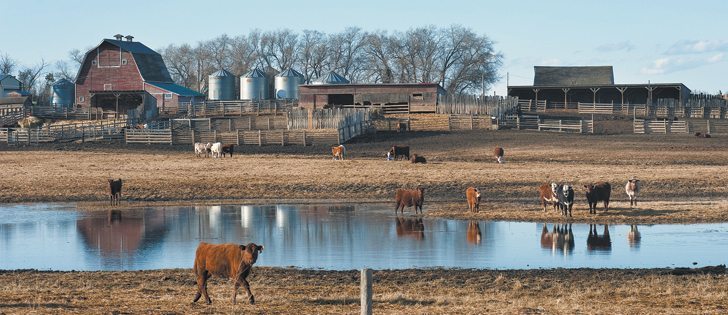Saskatchewan cattle organizations welcomed the provincial government’s decision last week to begin turning over its pastures to patrons after this grazing season.
Similar to the former federal pasture transition, patrons will get first crack at 15-year leases on 13 pastures after this year, 19 after the 2018 grazing season and the final 18 in 2020.
The decision to wind down the Saskatchewan Pastures Program was announced in the March budget. Agriculture Minister Lyle Stewart said the transition plan follows input from stakeholder and patron meetings and a recent online consultation to which 2,016 people responded.
Read Also

Organic farmers urged to make better use of trade deals
Organic growers should be singing CUSMA’s praises, according to the Canadian Chamber of Commerce.
Of those, 46 percent were farmers or ranchers. Nearly 30 percent identified themselves as patrons and 73 percent said they lived within 50 kilometres of a provincial pasture.
Seventy percent of respondents supported giving patrons the first right of refusal to lease government-owned land, but most opposed selling the land.
Sixty percent said the land should not be sold, and the same amount did not support dividing the land into smaller parcels in order to sell it.
Three-quarters of respondents said ecological preservation of the land was more important than economic opportunity, and the same number agreed that farmers and ranchers are responsible stewards.
The survey found 75 percent favoured agreements with current patrons to manage and operate the land, 55 percent supported agreements with environmental and advocacy groups and 49 percent agreed Saskatchewan livestock producers could take over.
Smaller percentages supported operation by municipal governments, First Nations, Metis communities, Saskatchewan-based agricultural companies and Canadian livestock producers from outside the province.
The Saskatchewan Stock Growers Association had passed a resolution at its annual convention just days before the announcement that called for patrons to be given the first chance at leases.
President Shane Jahnke said the government’s decision lines up with the SSGA’s main recommendations, particularly giving current patrons first opportunity to lease and maintaining grazing and ecological integrity of the pastures .
“It’s similar to the federal process we went through five years ago,” he said. “The Saskatchewan government has kept the best aspects of the PFRA divestment and implemented some ‘lessons learned’ as well.”
The Agricultural Producers Association of Saskatchewan also ack-nowledged the experience of the federal pasture divestiture and said it was pleased the pastures will remain in public hands.
“Community pastures have served the Saskatchewan agriculture industry well,” said president Todd Lewis.
“They’ve provided new entrants and mixed farmers with grazing opportunities that otherwise might not be available.”
About 1,300 patrons used the 780,000 acres of provincial pastures last year. They will be eligible for transition support to cover legal costs and business plans just as the patrons of federal pastures were.
Stewart said the improvements on the pastures will be transferred to the lessees at no charge, but the patrons will be responsible to maintain them.
He said one of the main differences from the federal transition is that those pastures were picked at random, while the provincial pastures will transition mainly by area.
“We learned it would provide more opportunities for efficiencies to the patrons’ groups if we transitioned them by area,” Stewart said.
“They could work together, hire joint managers, share some equipment, things of that nature.”
About 125 employees are affected by the decision, but just 15 are full-time and the remainder are on seasonal contracts. Some may be eligible for other government positions or for severance.
Patrons will see changes in what they pay for grazing. They currently pay $1.13 per cow-calf pair per day, which includes municipal taxes. Once the patrons form corporations or co-operatives to operate their pastures, they will also determine the fees.
According to the agriculture ministry, those fees would include an amount paid to the government plus labour, maintenance and other costs included in the rate. On leased crown land, lessees pay about 52 cents per cow-calf pair per day.
The leases will allow hunting and traditional use by First Nations and Metis people.
Stewart also said patrons who are unable to take on pastures by them-selves may choose to partner with First Nations or environmental organizations.















